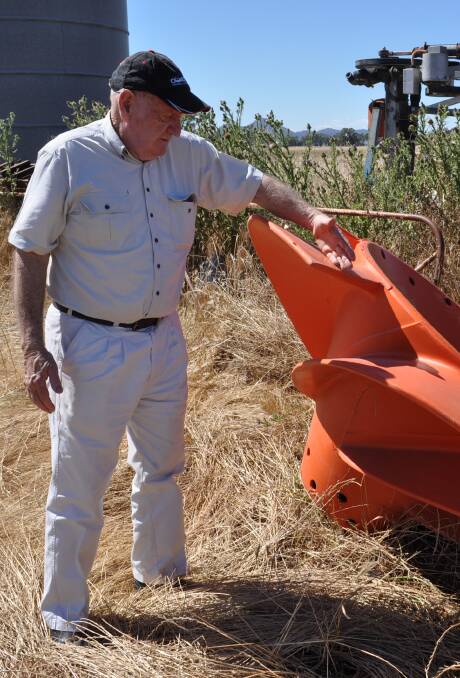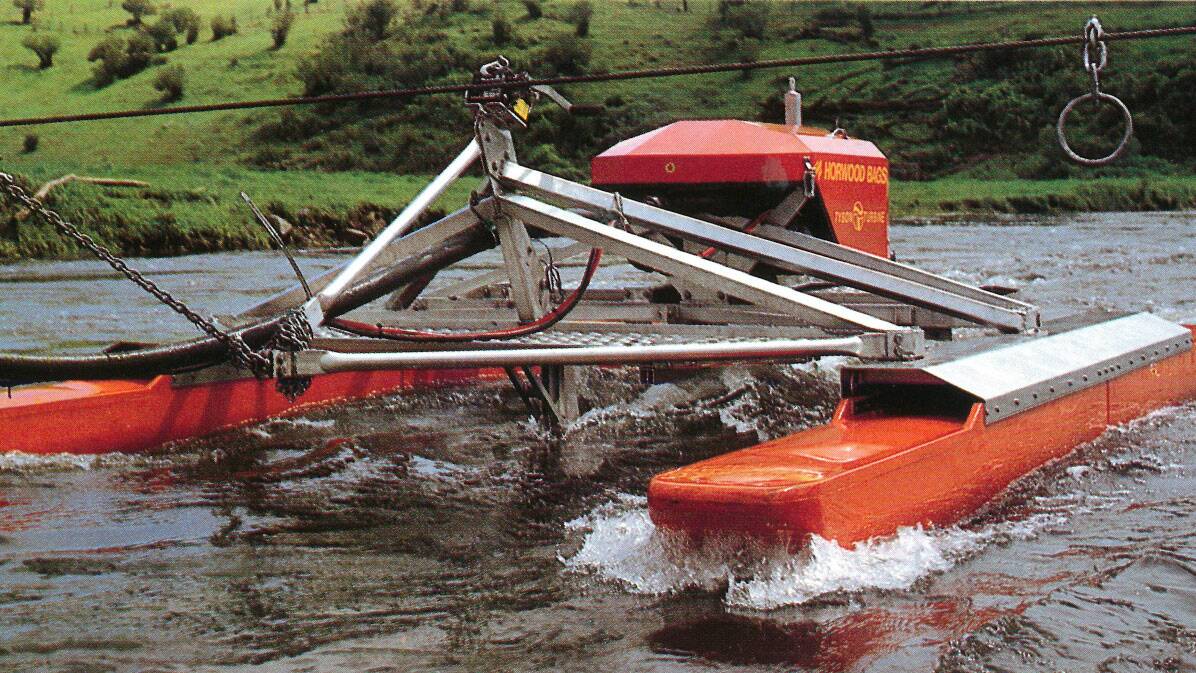
THE museum’s collection includes some remarkable Riverina inventions, including a Sunshine Harvester, the Clyde-Whitlock Plough and an almond-shelling machine.
Subscribe now for unlimited access.
$0/
(min cost $0)
or signup to continue reading
Soon the collection will expand to hold another award-winning local invention, developed in Mangoplah in the 1980s.
This week museum staff met with farmer and inventor Warren Tyson to examine his prototypes of an innovative turbine pump that captures the power of creeks and rivers.
The Tyson Turbine, which looks like a small catamaran, involves a unique conical turbine that sits fully submerged between two pontoons.
As a river current flows through it, the turbine powers an ingenious pump which can be used to pump water or generate electricity, as needed.
The whole unit can be tethered via cable to the river bank, floating freely in a canal or river to take advantage of even relatively slow-moving water.
Tyson’s invention is a marked improvement on the water-wheels we are used to seeing on the sides of medieval flour mills, or propelling paddle-steamers.
In contrast to those cylindrical wheels which barely touch the water, his turbine was shaped so that all its blades were in contact with the water at all times, capturing much more energy with a comparatively smaller wheel.
This would enable his device to collect energy from relatively slow-flowing rivers.
The son of a Griffith rice grower, Tyson grew up surrounded by flowing irrigation channels, with countless summer afternoons spent on the banks of the Murrumbidgee river.
Early memories of swimming against the powerful river current would later inspire his quest to harness the hitherto-untapped energy in seemingly slow-moving rivers.
The turbine’s unique conical shape was endlessly prototyped until a broad-spreading cone with seven curved blades was settled upon.

Tyson then invented a positive displacement pump based upon a single hydraulic mechanism that could cope with any debris that might be sucked through it, and this invention fetched him national acclaim.
He was heralded as Innovator of the Year by The Australian in 1985, and awarded Inventor of the Year at the 1986 Henty Field Day. Orders flowed in from around Australia and the world.
But luck was not on Tyson’s side. Efforts to secure development assistance grants from the government were unsuccessful, and the 1987 Wall Street crash kyboshed his efforts to float a company to manufacture the device. Units were distributed around the world for use in developing countries, but the invention never found commercial success.
The Museum of the Riverina will collect what is believed to be the last working Tyson Turbine unit in the world, as well as a selection of Tyson’s tin turbine prototypes and a collection of research papers which have been written about the Tyson Turbine.
The Tyson Turbine bears testament to the ingenuity of Riverina Farmers in engineering solutions to the challenges thrown at them by harsh conditions.
It tells a tale of innovation, perseverance and unfortunately, of tough luck bedeviling the best efforts of pioneering people who wished to tame an unforgiving landscape.

